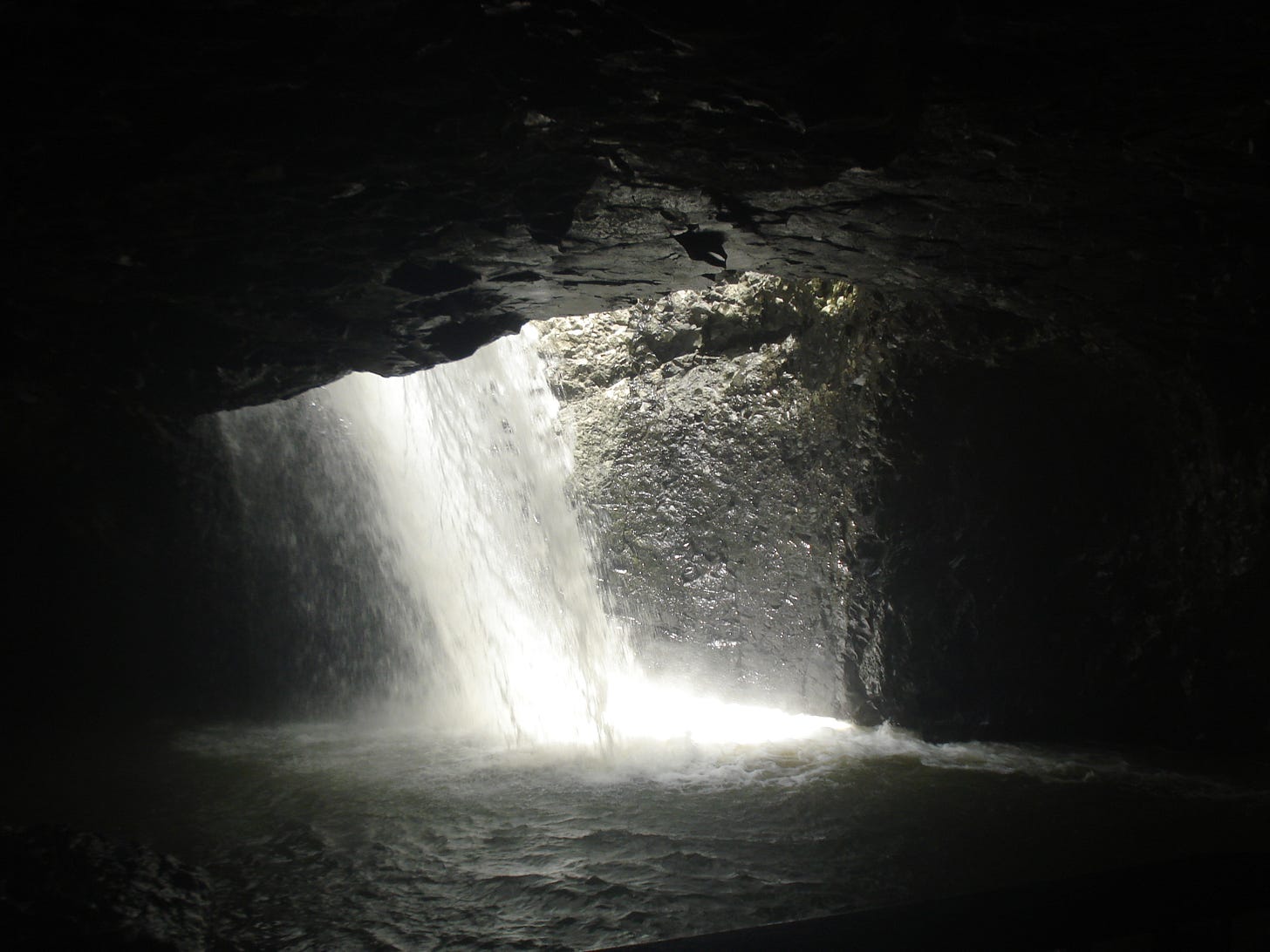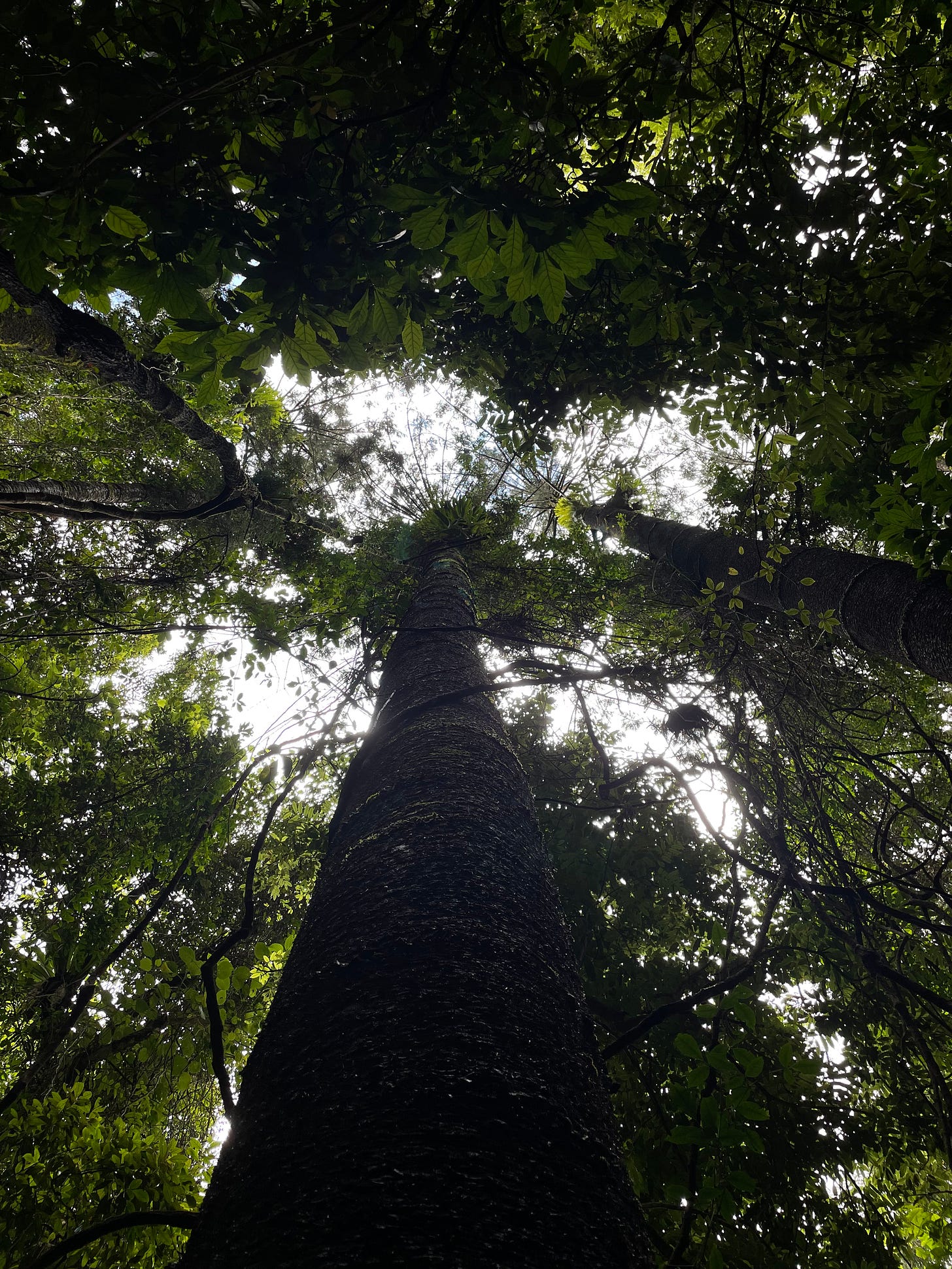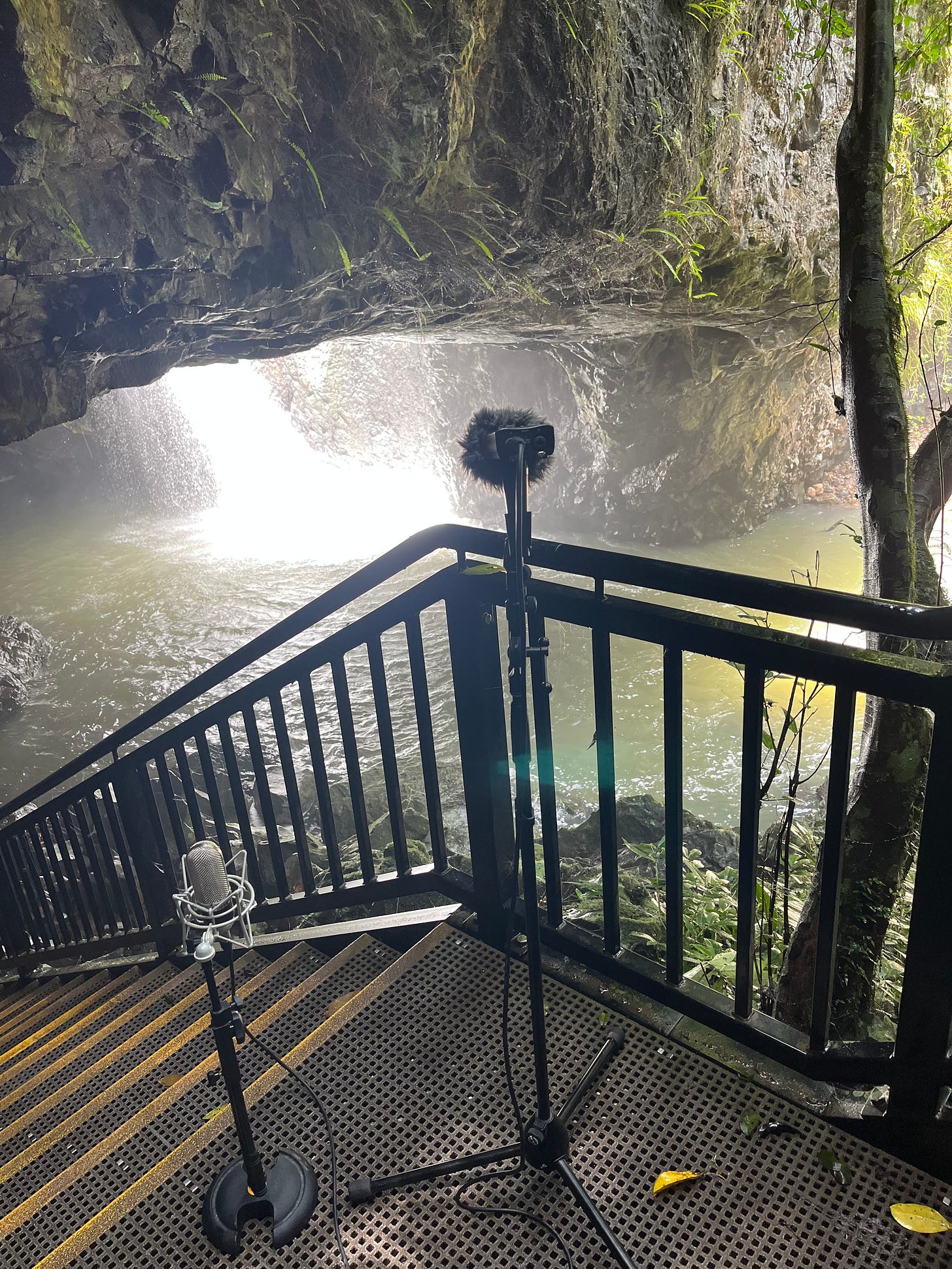Listening back to audio I recorded on that day, you get a sense of the awesome power that water inflicts on the landscape over time.
I travelled to the Natural Bridge after a night of heavy rain so the swollen Cave Creek was sending huge volumes of water down its rocky river bed. As with a number of other creeks nearby, the creek feeds into the Nerang River which then winds its way through Numinbah Valley.
Springbrook National Park occupies the northern side of a large shield volcano that was active 23 million years ago. The Natural Bridge is at the upper end of Numinbah Valley right near the NSW border. Once you are off the road you are completely immersed in stunning subtropical rainforest with the sound of a forest alive with mid-summer insects and birds and the river in the distance.
The formation of the bridge is pretty cool. The cave was formed by softer basalt eroding over time under the waterfall. According to the Local Studies Library - “Upstream of the waterfall a pool was formed by the scouring action of rocks and it was this pool that eventually broke through into a cave below forming an archway or bridge.”
I was meant to meet a couple of fellow artists for an excursion into the forest, but with the threat of more thunderstorms that morning, they pulled out. So my daughter jumped on board to keep me company and to dj the road trip (Shout out to Beck, Jagwar Ma and Tears for Fears.)
As I stepped out of the car I almost slipped on the Quandong seeds that littered the car park. The forest was rich with various fruits and gave off an almost sweet, fermenting smell of extreme humidity and rotting pulp. The fungi was loving it.
The circuit is only a 400m walk, so we reached the creek in no time. I listened as we walked to hear how the flowing water sounded at various spots as we approached the waterfall. The amount of air pressure intensified as we got close and I wondered if it really was a mistake not to bring a wind sock for the ribbon mic (too much air pressure can damage a ribbon mic).
I set up my handheld Tascam (stereo condenser mics) and my Rocket ribbon microphone on separate stands (windsock on the Tascam) and then walked the microphones to different locations and distances from the waterfall. I was careful not to take the ribbon mic too close to all that moist moving air, but I think it held up pretty well in the recordings.
Stereo condenser mics
Ribbon mic
NB: the condensers’ area stereo pair and the ribbon mic is only in mono
You can hear the difference between the two microphones close to the waterfall. I like how they give me sonic variations to potentially use in one of the new songs. The ribbon mic has less detail in the high frequencies but it shows off the rumbling low frequencies of the river. To me it’s the darker sounding of the two.
The condensers on the Tascam have a natural mid to high frequency range that picks up more of the bird songs, but has less focus on the lower range rumble of the river.
Here are the two variations at a spot further up and away from the waterfall where you will hear more of the forest.
Stereo condensor mics
Ribbon mic
I did try to play some flute at this spot, but even on a Wednesday morning with the threat of thunderstorms, there were plenty of people walking the track. I stopped and started a few times, but never even really warmed up the flute to play anything useful. But I edited together a little experimental sketch for fun.
This project is supported through HOTA’s Artkeeper program. #Ngarang-wal #HOTAcreates













Share this post